As I write this I’m sitting on a train headed back to Sweden, pondering the result of a year’s experimentation with travelling by train instead of flying. Is this an effective way to reduce my carbon footprint? The jury is in! Read on.
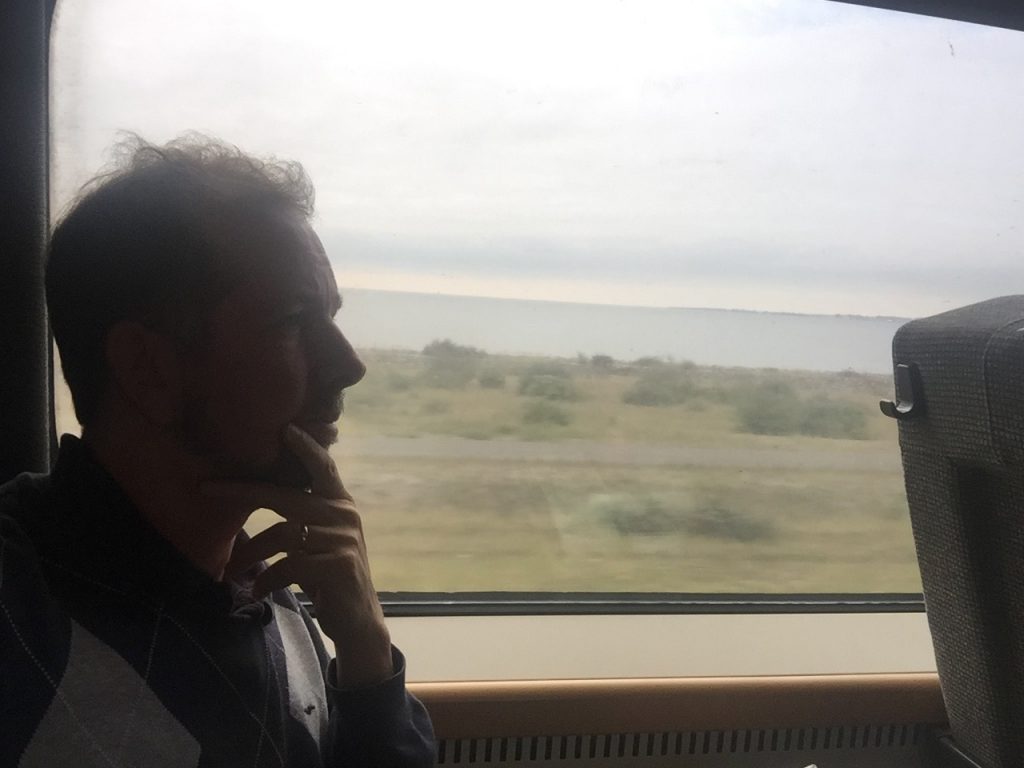
One common rallying cry among climate advocates is to fly less (or ideally not at all). I consider myself a climate advocate (here’s my entry ticket), but I’m also a pragmatist. I’ve worked enough with behavioural change to know that it’s unrealistic to expect many people to change their habits unless there is a convenient and compelling alternative. For example, Spotify killed music pirating, not by attacking pirate sites, but by providing a better and more convenient alternative.
So what are the alternatives to flying, if you want to get from A to B?
- Option A: Don’t go. Stay at A. This option won’t fly (pun intended) with most people. There’s a reason why they want to go from A to B, and only a small number of people will be willing to sacrifice that (kudos to those people though!).
- Option B: Walk or bicycle. Not feasible. A distance that is long enough to take a flight is usually waaay too long for a walk or bicycle ride, unless you are an enthusiast with LOTS of time on your hands.
- Option C: Car. This makes sense only if you travel in a group, or if you drive an electric car. If you drive alone in a fuel car, the climate impact is about the same as flying, just takes longer and is more dangerous and clogs up the road.
- Option D: Bus. I haven’t found any long-distance bus options to the places I go. Might be more feasible in other countries than mine.
- Option E: Train. Is train a feasible alternative? Definitely climate friendly, but what about price, convenience, reliability, and time? Read on!
I live in Stockholm. The past 3 years I’ve been travelling on a regular basis to Billund in Denmark, because of a long-term engagement with LEGO. I’ve also travelled to Paris a few times to do conference keynotes, and Gothenburg to work with Trine. The past year I’ve replaced almost all flying with train – I’ve spent about 150 hours on trains in Europe (in fact, I’m sitting in one right now as I write).
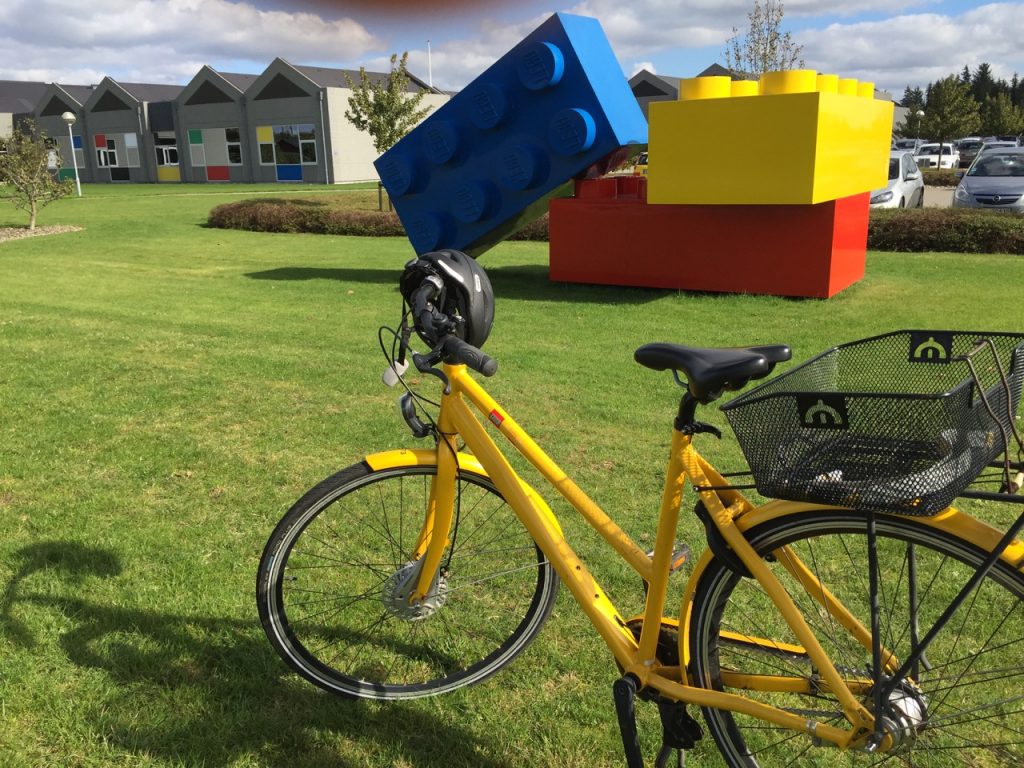
So is train a feasible alternative to flying?
My conclusion so far: Not really. Darn.
My hypothesis was that train travel would take longer than flying (obviously), would cost the same or less, be more convenient and comfortable, and significantly reduce my climate footprint.
I was right about travel time and climate impact, but wrong about price and convenience. And considering other ways to make a climate impact, long-distance train travel is just a bad deal in comparison (scroll down for details).
Now don’t get me wrong. Long-distance train travel is a fun exciting adventure, it is a much cooler and more fun way of travelling than flying, especially with kids!
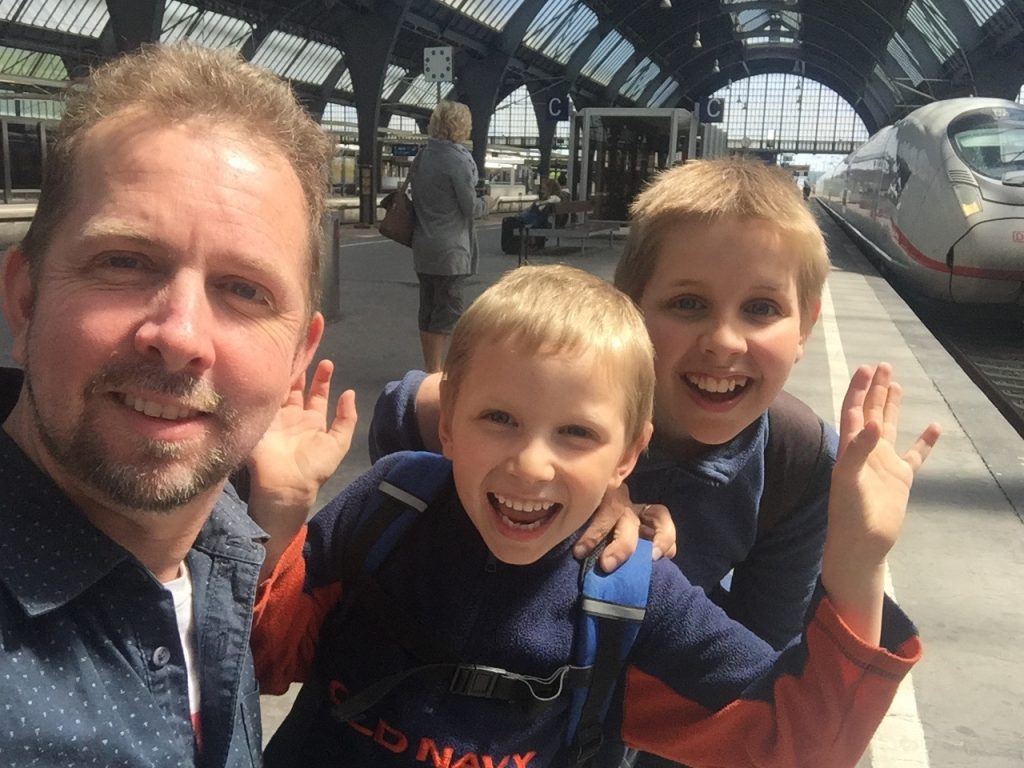
But now I’m talking about how feasible it is for regular travel, once the novelty has worn off.
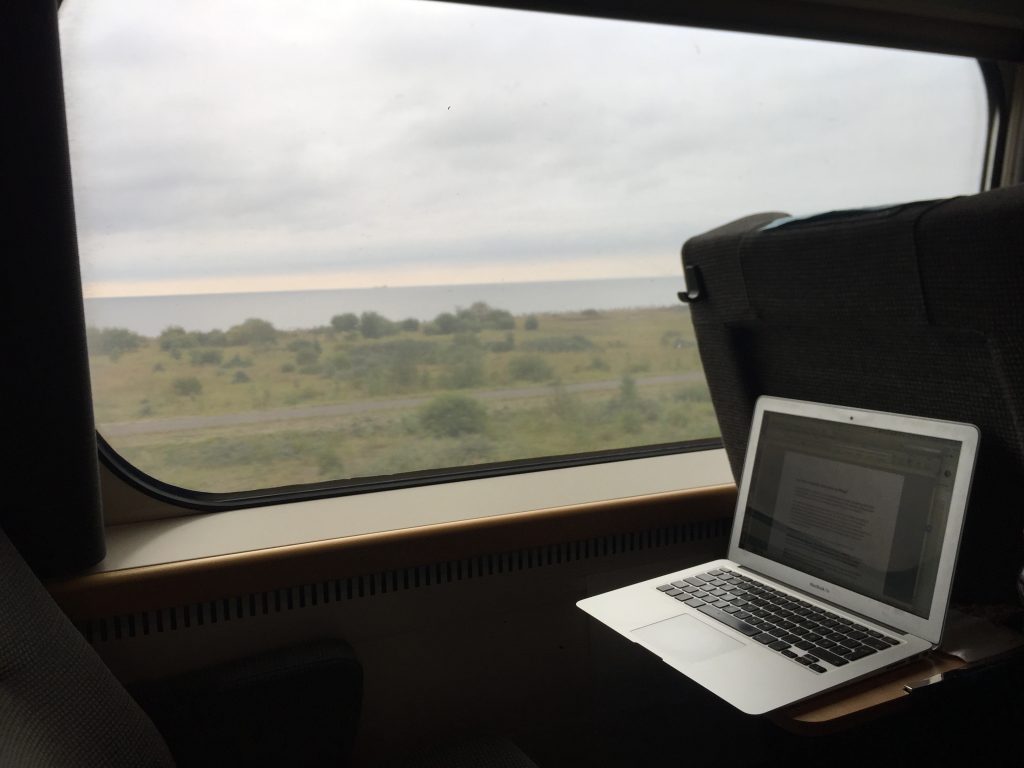
The only time train makes sense is if you happen to be travelling between two cities that are within 600 km and happen to have a high-speed direct rail connection (in my case Stockholm – Gothenburg). In those cases, train is great! But other than that, not so great.
I’m sad about this conclusion, because I really was hoping train would win out, because it seemed like the only realistic contender against flying.
This is obviously not a conclusive study, just 3 routes. But it’s a pretty representative sample set – 3 pretty different types of trips that I’ve done multiple times. I’m pretty sure trying more routes won’t change my mind on this.
OK let’s look at the data:
Example 1: Stockholm – Paris
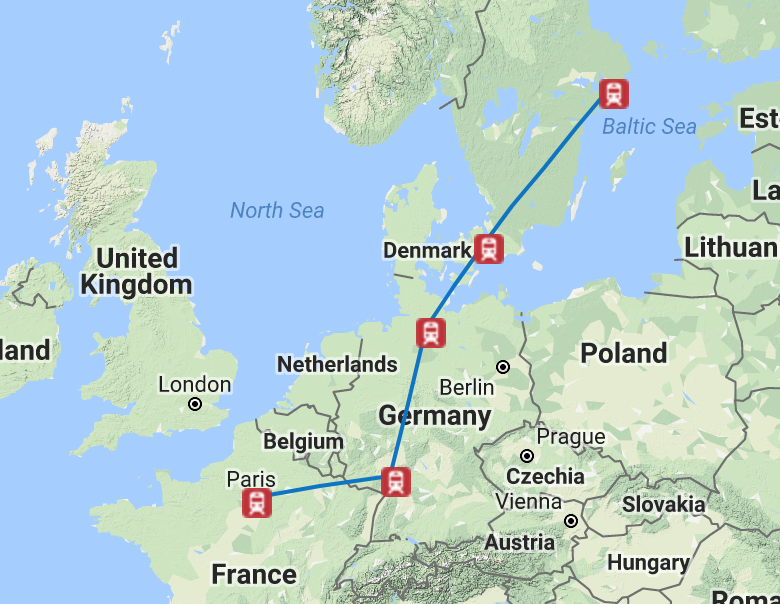
| Train, one way | Plane, one way | |
| Travel time | 24 hours, 3 changes | 4 hours, no changes (includes airport time) |
| Price | €280 | €130 |
| Climate footprint | 30 kg CO2eq | 750 kg CO2eq |
| Reliability | Low (train delays, missed connections, etc) | High |
The prices are just a typical example, the exact prices vary A LOT for both train and plane. But in most cases flying is a lot cheaper.
Sources:
- Flight prices: HipMunk.com
- Train prices: Loco2.com
- Flight footprint: CarbonIndependent.org
- Train footprint: www.eea.europa.eu
So let’s look at the cost/benefit comparison of train vs plane in this case:
- Cost: €150 higher cost, 20 hours longer time, higher likelihood of delays and hassle.
- Benefit: 720kg reduction of climate footprint
- Climate footprint reduction price: €208 per ton
Train travel is more comfortable, but if we factor in the 3 changes and the risk of delays and missed connections, the comfort isn’t that great after all. Plus for long train rides you’re gonna sleep on the train, and good routes with sleeper coaches are hard to find (I didn’t manage even once). I’m lucky though, I sleep pretty OK sitting in a regular train chair. But I don’t expect that to be true for most people.
But more importantly – the price tag of €208 per ton CO2 reduction is insane! There’s MUCH better ways to spend that money for the climate, scroll to the end for a graph.
Example 2: Stockholm – Billund
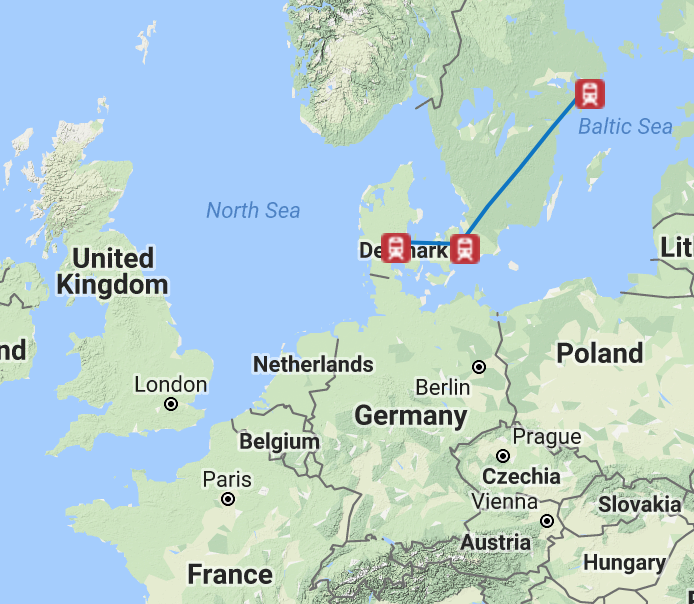
| Train (one way) | Plane (one way) | |
| Travel time | 8 hours, 2 changes (bus the last leg) | 2.5 hours, no changes (includes airport time) |
| Price | €120 | €60 |
| Climate footprint | 10 kg CO2eq | 380 kg CO2eq |
| Reliability | Medium | High |
Cost/benefit comparison
- Cost: €60 higher cost, 5.5 hours longer time, slightly higher likelihood of delays and hassle.
- Benefit: 370kg reduction of climate footprint
- Climate footprint reduction price: €162 per ton
Not quite as bad as Stockholm – Paris. But still a pretty bad deal. Twice as expensive, 3 times longer travel time, and again, a ridiculously high price tag for the rather small CO2 reduction.
The time itself is not a problem though. I can make good use of those 8 hours, sitting in a comfortable seat with a decent internet connection (in fact, I’m being really productive right now, sitting in a train writing this article).
Example 3: Stockholm – Gothenburg
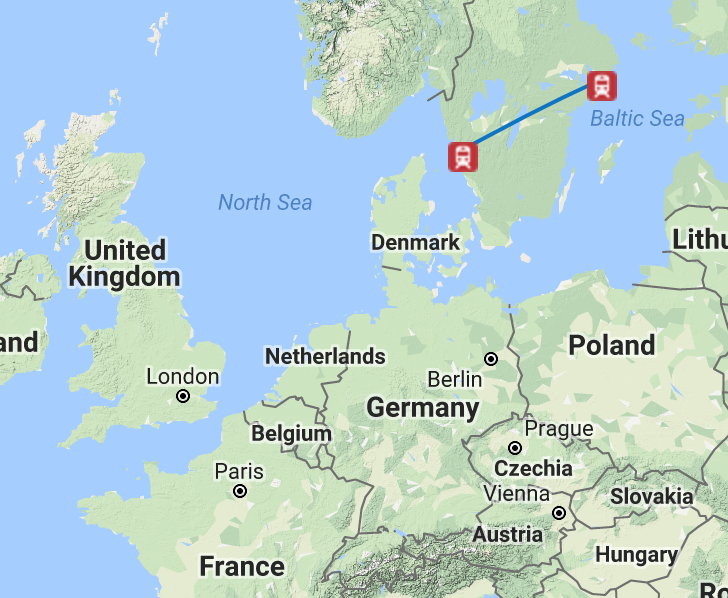
| Train (one way) | Plane (one way) | |
| Travel time | 3.5 hours | 2 hours (includes airport time) |
| Price | €24 | €24 |
| Climate footprint | 10 kg CO2eq | 250 kg CO2eq |
| Reliability | Medium | High |
Cost/benefit comparison:
-
- Cost: Same cost (roughly), 1.5 hours longer time
- Benefit: 240kg reduction of climate footprint. More comfortable journey.
- Climate footprint reduction price: 0!
This is where train shines. Same price as flying. Slightly longer trip, but MUCH more comfortable and less hassle (more leg room, internet connection all the way, no security gates, etc). I’ve done the trip a few times with no hassle, but some friends report that it’s actually quite unreliable and they often run into delays. So I guess I’ve just been lucky so far.
Conclusion – long-distance train sucks, but it shouldn’t!
I hate to say it, but from now on when I travel outside Sweden I’m back to flying, and offsetting the climate impact.
I know some climate advocates don’t believe in carbon offsets, but the math is pretty clear. We’ve spent lots of time exploring this at GoClimate.org, and concluded that 1 ton of effective, certified carbon offset costs about €4 (for example, we recently purchased 1000 tons for €2622, a hydro project in Vietnam). Compare that with €160-200 for 1 ton of carbon reduction via long-distance train travel. That’s 40-50x more expensive! And even if our offset pricing is wrong by a factor 10, it’s still 4-5x more effective than long-distance train!
Here’s a graph comparing the price of carbon offset/reduction using various services. Long-distance train is clearly the worst.
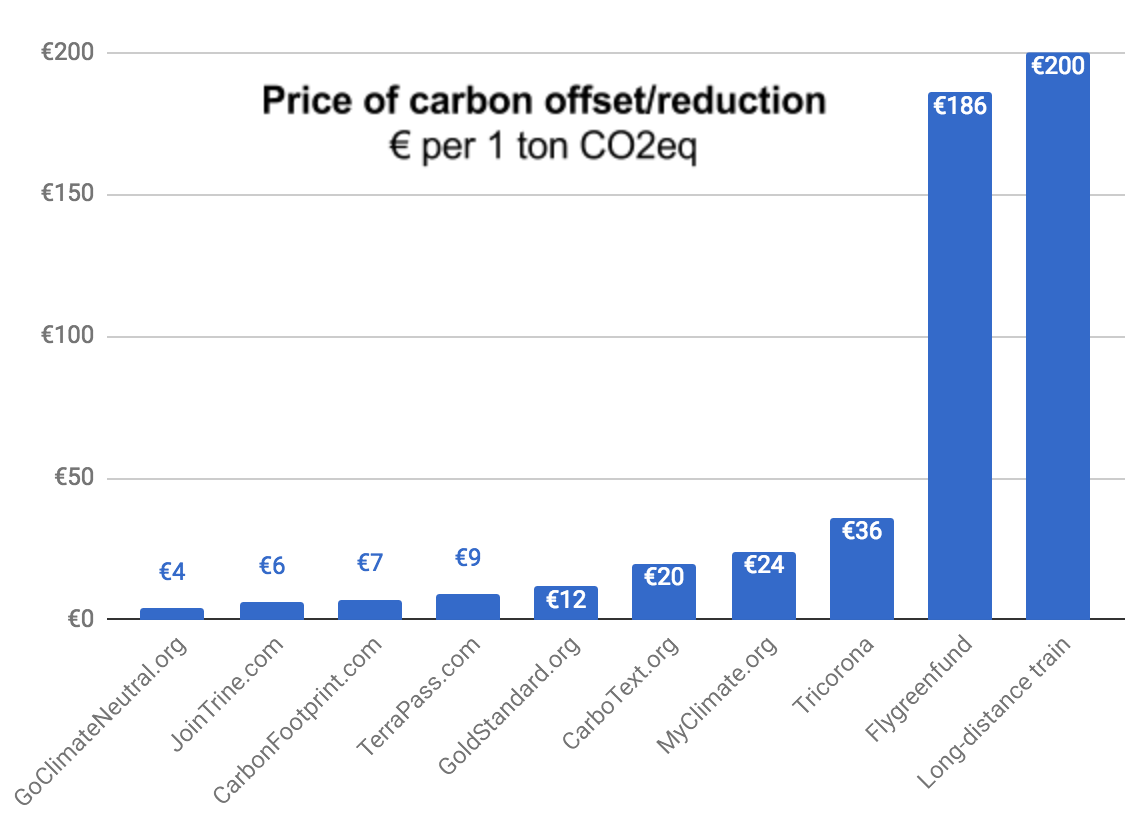
(note that the prices for JoinTrine.com and GoldStandard.org vary from project to project, I picked their best projects for this graph)
So if you really need to travel longer than 600 km, then flight + offset is the least crappy way to do it from a climate perspective, at least as long as train travel is twice as expensive as flying.
Let’s take the Stockholm-Paris example for comparison.
- Option 1: travel by train and pay €280.
- Option 2: travel by plane and pay €130, plus an additional €4 to offset the carbon footprint (= pay for corresponding carbon reduction somewhere else). Just a 3% increase in price! And hey, why not add another €10 and make a positive impact on the climate instead of just neutral! Still way cheaper than train.
From a systemic perspective though, this is still broken! It would be MUCH better if people were incentivized to not pollute the climate in the first place (= take train instead of plane), instead of polluting the climate and paying to offset it somewhere else.
So politicians, engineers, policymakers, listen up!
- Make long-distance train cheaper than flying! Either by subsidizing train more, or by taxing flights more. It makes no sense that people should pay extra when doing the right thing for the climate.
- Invest heavily in improving long-distance train infrastructure. Train is great, when it works! But the reliability of cross-Europe train travel is too low. Last minute changes and delays on a multi-leg journey means you need to have a ridiculous amount of safety margin when making, say, a business trip.
- Support research on electric planes. Fully-electric passenger flight is a huge technical challenge, but plenty of efforts are ongoing and the more support they get, the better. Check out this on hybrid and electric planes.
- Support efforts that lower the climate footprint of flying. For example aviation biofuel. Because we’re going to be stuck with flying for a long time, so let’s at least reduce the impact as much as possible.
Fortunately, aviation accounts for only about 2% of global carbon emissions (source). So even if everyone stops flying now, that will only slow down global warming by 2%. Cars and energy production (coal & oil power plants) account for almost half of global carbon emissions, so that’s where the big change needs to happen. And it is happening! We’re currently seeing an exponential growth in affordable solar panels and electric cars.
PS – if you (despite this article) are gonna do long-distance train travel in Europe, I can strongly recommend loco2.com for finding the routes.
Oh, and if you are a frequent long-distance train traveller and you have another view on this, maybe you live in an area where long-distance train travel is perfectly feasible, then please add a comment. Show us the numbers. I’d love to be wrong about this whole thing.
May be the autonomous campervan could enter de competition not so far in the future… 🙂
https://www.youtube.com/watch?v=epxqxAnOWfs
I guess your conclusion is valid for Europe and especially Germany, where trains are notoriously unreliable and flight is available, or Nordic countries, where trains are just expensive.
In Russia plane wins when you consider time as a value, with two exceptions. Yet, flights can be delayed or canceled on very short notice, trains not (if you want to make an appointment for precise time in Vladivostok while being in St.Petersburg, train is your option… 6 days 2 hours of ride in sleeper instead of 9 hours of flight in cramped economy will be your price). At distances longer than 1000 kilometers trains are slightly more convenient and often cheaper than flight (you can carry more by rail and security isn’t nearly as tight), as well as night in sleeper isn’t too bad (very few long-distance trains are non-sleeper here). Also, there are really few places closer to Moscow than 1000 km where you can choose between flight and rail (St. Petersburg, Nizhni Novgorod, Belgorod, Pskov, Voronezh… that’s all), as well as there are no regional aconnections (like, these days you can’t fly directly from Yaroslavl or Murmansk to Arkhangelsk or Vologda, from Kotlas to Yekaterinburg, from Chelyabinsk to Saransk, etc.), and even in that case changing in Moscow, St. Petersburg, Yekaterinburg or even Novosibirsk (if you go from, say, Blagoveshchensk to Yakutsk) is faster than going by rail.
Also, in Russia carbon footprint isn’t something really bothersome.
Here in the US, there is really only a couple of trains that make any sense what so ever. The Acela line is probably the only viable line other than the commuter trains into major downtown’s.
Take a common route, New York City to Fort Lauderdale, FL. About 1500 miles. 30 hours by train at a one way cost of around $300 in a coach seat, $700 and up for a sleeper car. $100 for a one way flight that takes two hours.
I’ve often wanted to take the train, but just can’t swallow the more expensive and 10x time difference….
Looks to me like your conclusions are pretty accurate. Possibly the sad conclusion is that train travel makes less sense in a large and sparsely populated country like Sweden (seems to be similar in Canada and even the US, although train travel should logically make sense in the more densely populated areas). In continental Europe train travel makes a lot more sense – the higher density population and shorter distances mean that there are better connections and “regular trains” are usually cheap, high-speed trains are relatively cheap (flying is still often cheaper though, which is a shame). Apparently even high-speed rail champion France is stopping the development of new TGV routes because the economics don’t make sense: https://www.economist.com/news/europe/21724412-and-swaps-label-tgv-something-sounds-ennui-france-launches-its-last-high-speed
Here in the Provence (southern France) we have quite à lot of people, living here, but with regular travel to Paris.
Thanks to the TGV these 800 km are equaly distance in time forv plane and train.
Prices depend a lot on date and time (both use lean-management for pricing), advantage for train is the lower taxi-ride for final destination.
I think your conclusions are valid for Stockholm but not for other parts of Europe. If you live for example in Germany train travel times to many European cities are much shorter.
From my experience reliability of planes is low to medium. Planes are often delayed or cancelled due to weather condition (or airlines in trouble, think Ryanair, Air Berlin, …). Connections are frequently missed. Personally I had much longer delays travelling with planes than with trains.
The problem that remains is: cost. At least in Germany there are many direct and indirect subsidies for airport. (And I doubt that a plane ticket of 24€ from Stockholm to Gothenburg is possible without subsidies). Stopping these subsidies would be a first step…
You would have to factor the time/cost for the routes to/from the airport in order to have a more fair comparison. This addition wont brake your initial findings but it will improve the attractiveness of short distance train rides.
Yes, good point. In my case the distance is about the same (I live outside Stockholm), but for someone who lives close to the train station and far from the airport, that will of course make a difference.
Re the comment above about counting travel time to the airport – there is also the fact that you usually need to be at the airport much earlier than you need to be at the train station. So for someone like me, living in Brussels, flying to London or Paris or Amsterdam (and many more cities) takes longer than taking the train. But obviously flying from Brussels to Stockholm is much faster than the train to Stockholm… 🙂 So again the distance-thing is significant as well as the fact that Stockholm is a fairly isolated city in a large sparsely populated country. Your conclusions are valid for Stockholm but not for much of mainland Europe. Now how do we get policy-makers to change the incentives by making train travel cheaper than flying (for the places where train travel makes sense).
Excellent report but perhaps you should bear in mind that Sweden is a large, uncrowded and peripheral country. Most European journeys are between big and relatively closely spaced centres of population where train would be far more competitive if only networks were better integrated and unfair competition (untaxed kerosine, huge road investment) were abolished.
Hi, Henrik,
Your graphic shows that GoClimate is cheaper (thus more efficient?) than GoldStandard. But GCN uses GoldStandard in some way. Can you describe the relationship, and tell us how GCN keeps costs down?
Thanks,
Rob
@agilecoach
Hi Rob!
Hopefully it’s ok if I try to answer your question instead. I think the main difference is that it’s different climate projects, If the Gold Standard website had the same Gold Standard-certified projects that we have, the price tag would probably be a lot more similar. But chance is that we would be cheaper even though the project would be the same, due to:
– we buy large chunks of CO2eq-credits, and the admin-cost is a lot smaller per ton if you buy 15000 as we do – then when you buy 1.5 ton as you would when you offset a short flight.
– our margins are very low. We work for free now and have no need for paying salaries or offices or similar. When we grow more, we can hopefully get paid for our work, but right now we only work to try to stop climate change. I’m not sure what margins the gold standard website has on their projects.
Does that make sense?
Kalle,
That helps considerably. Thank you!
Rob
Interesting article which highlights the need for realism when talking about how to tackle climate change. Most people will definitely bear cost benefit and time gain in mind when choosing how to travel. What the article lacks, however, is an honest discussion about what necessary travelling looks like. That too is an important psychological issue to tackle. Flying for vacational purposes is not possible. For work? I don’t know.
Rule of thumb: Take the train when you can, fly when you really must.
I think your data that justifies train efficiency might be flawed in the assumptions. ( I couldn’t actually find the data/details that produced that graphic). Other data suggest trains and planes are more on par due to passenger load factors, number of different types of trains, and equipment used to maintain tracks. I refer to https://afdc.energy.gov/data/10311 which does provide more details/
Is the calculation include the railway construction( producing the rail, mining, etc) CO2 emission?
We should consider the advantages of passenger trains versus air travel. Airports are far outside of town, due to the danger and noise.
Train stations are in the centre of town, close to where people live, work, and sightsee.
Airlines ask you to arrive at the airport 3 hours before departure, to give you enough time for the long baggage checck-in line, the long security check line, waiting for your flight to start boarding, and to finish boarding. A plane takes 1.5 hours for all the passengers to board, all filing through one tiny door, loaded with carry-ons and struggling to fit them into the overhead compartments. The whole line waits while one person struggles, unable to pass him/her due to the narrow aisle.
On trains, there is no baggage check line, no baggage weighing or bag counting. Passengers board a train through its many doors with no lines.
After boarding a plane passengers sit for approx. another 30 minutes while the crew gets ready. Finally the plane begins to taxi toward its takeoff runway. Once there, the Captain announces, “We’re 5th in line for takeoff.”
Trains don’t have to delay everyone 3 hours… they stop only a couple minutes at each station.
Train seats are much bigger than airline seats, and there is much more legroom. You can get up and walk around and stretch your legs on a train. Aisles are wide, and people often spend long times in the aisles gazing out the aisle windows which look in the different direction from the windows in their compartments.
For example, if there are mountains on the aisle side of the train that you can’t see from your compartment, just go and stand at one of the many big aisle windows.
On a plane there are no aisle windows, and you would be told to “take your seat” anyway.
On a plane there are seats a few inches in front of you blocking you from walking easily to the aisle. So if you don’t have an aisle seat, the people in your row between your seat and the aisle have to get up and go into the aisle to let you into the aisle. There is no room to squeeze by them.
Not so on trains. Just stand up and walk.
Airline seats recline only 1 inch, making sleep impossible or uncomfortable.
European trains are deliberately schelduled to depart major cities around 10 pm and arrive in another major city around 8 am. They are deliberately timed that way to allow a nice night’s sleep and wake up to start a full day in your destination.
Whether travelling overnight or travelling by day, make sure you buy a ticket for a wagon that is divided into compartments. Sleeper car compartments have 2 seats facing 2 seats (very social).
At night the conductor comes with clean sheets, blankets, & pillows, and by moving panels up & down converts the 4 seats into 4 bunk beds. So instead of sitting up all night as you would on a plane or driving a car, you sleep in a real bed, rocked to sleep by the gentle rolling and sounds of the train. So much for trains being “time consuming.” It’s a night you won’t have to pay for a hotel.
You see so much from the huge train windows.
From the tiny plane windows you see only cloud tops. You really can’t see anything of the natural beauty, towns, & cities of Norway or Croatia from 30,000 ft.
Trains have dining cars where food is cooked and served to you at real tables with white linen. Those that don’t have dining cars have a bar car that serves some hot food & snacks.
At many stations in the former USSR, local women sell home-cooked food from the train platforms. Just hand money through your compartment’s window & receive the food!
Buy from them to taste local fare. Buy non-corporate, non-global!
The conductor will often keep a couple of your items cold for you in the refrigerator he has in his compartment, where he keeps cold beer for sale. Label your bag with your name & date.
When you buy your ticket ask if there will be a dining car on the train. If not, bring dark bread, cheese, boiled eggs, local beer & dried fish. These will supplement the above hot food you buy from the above women at stations. You can buy some food items and bottled water from the conductor aboard.
[And yes, you may bring your pocket knife on board to slice the salami, unlike on airplanes! Nor can you bring food or drinks onto an airplane.]
Many trains have showers; ask if yours does. If not, you can buy a ticket on the same run departing at a different time of day, maybe costing a few dollars more, and that train will perhaps have showers.
Breaking up your train journey can be a real bonus. Heading to the south of Italy and fancy stopping over in Milan for lunch? Trains allow you to do exactly that at no cost. Stretch your legs on a walk around Paris or take in a museum in London, you can schedule convenient stopovers to make the most of your itinerary, with no extra charge. You can’t do that when flying (except at the airline’s flight hub city).
Switzerland for example has over 20 train stations, but only 3 airports. Trains take you more places!
Italy has 76 passenger train stations but only 8 airports. Trains get you closer to your destination.
Trains are more bike friendly than planes. Most trains charge nothing for a bicycle.
The environment? A journey from London to Madrid produces 265 kg of harmful emissions per passenger by plane, but a mere 42 kg by train, according to EcoPassenger. 265 vs. 42!
If you drive in an automobile through a border passport/customs control, you are often stuck in a slow line of many cars. On a train there is not even one minute’s wait. The passport/customs officers board the train and, as the train continues on to the next station, they walk through each wagon, visiting one compartment after the other. Then the officers debord. You and the train are not delayed at all. Unlike automobiles, the train never never waits in a line.
Consider the speed of trains vs. cars. In a car you have red lights and traffic jams. If you need gas, food, or need a restroom you have to stop. At night you stop to sleep (paying €100+ for a hotel room. ) A train suffers none of these delays. It just keeps on rolling, with you sleeping in your real bed, reading, socializing, or eating in the dining car.
On a plane one has only the person next to him to talk to.
On a train, one has everyone in his compartment to talk to, plus the people one can meet in the bar car, and those standing at aisle windows looking out, stretching their legs. Some of the most interesting people can be met on a train. It’s nice to have your own little compartment with a door that locks from the inside at night to keep the sneak thieves out! It is your own little space, and your compartment mates are your companions.
I’ve traveled many times by overnight train in a 2nd class sleeper car. The compartments have always been 4-person with 2 bunk beds on either side. It’s all very comfortable. (The wagons withj 6 person compartments are for day runs). I have never had any problems or complaints about the people I’ve shared an overnight compartment with. Most of them were very interesting people. You won’t get this good an opportunity to meet the local people in a cafe, a shop, or a hotel, where people are often rushed. You don’t tour a foreign country just to see the sights; you also want to meet the people!
Train compartments are a great way for a traveler to learn about a geographic area; many locals are proud to tell you all about their cities. That way you’ll know something about a place before you arrive, and maybe get some good advice. Inside information, as they say!
Lots of people end up having fun parties in their compartments. On the fold-down table appear sausages, cheese, boiled eggs, dark bread, local dark beer, dried fish… The conductor sells beer, and the snack car/bar sells other foods, but most Ukrainians bring food from home. Very dried salted fish is popular in Europe with beer. Try it!
Make sure you don’t buy 1st class train tickets. These are isolation chambers, with only one person or one couple per compartment. Also they’re very expensive.
Many a traveler doesn’t know to ask for “a 2nd class compartment” (day) or “a 2nd class sleeper wagon” (night), and they get stuck sitting all night in an airplane-style seat, all the seats facing forward. Not only is it anti-social, but the seats only recline one inch, so no sleep.
Or the “language barrier” and a ruxhed and surley ticket sales clerk foists a costly 1st class “isolation” compartment ticket on them, assuming that Westerners all want “luxury.”
So find out the words before you get in line to buy a ticket; write them on a piece of paper and hand it to the ticket window clerk:
. . . . . . . . . . 2nd CLASS. . . . . . . . . NIGHT . . . . . . . . . . . . . DAY
English . . . . . 2nd class . . . . . sleeper wagon . . . . . . compartment
French . . . deuxième classe. . . . voiture-lits . . . . . . . compartiment
German . . . zweiter Klasse . . . Schlafwagon . . . . . . . . Zugabteile
Polish . . . drugiej klasy . . . . . wagon sypialny . . . . . . . przedział
Italian . . seconda classe . . . vagone di cuccette . . . scompartimento
Spanish . . segunda clase . . . . coche-cama . . . . compartimento de 6
personas
Russian . . второго класса . . спальные вагон . . . . . . . купе
Many tourists take express trains because they are newer, higher tech. I never take express trains because I prefer the old wagons for their charm. Express wagons’ usually don’t have compartments, but instead all seats are together & face forward. Express train tickets cost more, the windows don’t open, and they have more businessmen & tourists than local people.
I advise even more strongly to avoid the high velocity “bullet” trains. Their tickets are much more expensive, and they have non-reclining airplane seating, with no compartments. Few people really need to travel from Paris to Prague in 90 minutes. You’ll miss all the fun!
High speed train stations look like airports, with metal detectors, X-rays booths, restrictions, and armed security. For example you’re not allowed to see friends & relatives off on the platform, or greet them as they come to a rolling stop, like you can with conventional trains. You must arrive 2 hours before high speed train departures. After a long wait in the security line your shampoos and nail files will be confiscated.
High speed tracks are constructed with a huge amount of steel-reinforced concrete, which costs $Billions. This high technology eliminates the pleasing clickty-clack sound of the normal speed trains, as well as their gentle swaying from side to side. Riding in a high speed train feels like riding in a commercial jet.
Interesting sights will pass your window in a blur, without giving you time to look at them. There are no seatbelts, so if you crash at such a speed it is not pleasant. These trains whizz right thru most stations without stopping. Higher tech is not always better, it’s just more costly. Globalization destroys all cultures.
Ticket sale clerks often assume that people from “advanced” countries like the UK want high velocity train tickets, and they’ll sell you one without asking you. So before you get in line to buy a ticket, look in your travel guide for the name of the high speed train service in that country. Write the name in the local language on a slip of paper, with the local words for “I don’t want” in front of it, and give it to the ticket sale clerk. Examples:
UK . . . . I don’t want Eurostar or any high speed train.
France . . . . Je ne veux TGV (Train à Grande Vitesse).
Germany . . . . Ich will kein ICE (InterCity Express).
Poland . . . Nie chcę ani “Y-Line”, ani HSR, ani żadnego
szybkiego pociągu.
Italy . . . . Non voglio né Frecciarossa né Freccia.
Spain . . . . No quiero AVE (Alta Velocidad Española).
High velocity trains are a good example of the modern misconception that new technology is always better. A similar misconception is “If we can do something, we should.”
American tourists should consider that they didn’t come to Europe to fly around, drive on Expressways, and patronize Starbucks.
I once had a friend from NYC who took his son to see Europe. He planned it all out, 8 capital cities in 10 days. They took every express & high speed train available, and even flew. Their trip was a whirlwind.
“Look, there’s the Brandenburg Tor… Gotta go!” “Whoa, the Colliseum!” They collected cities like postage stamps, the more the better.
Speed ruins a trip. Speed makes the world smaller; but I want the world to be big.
Bon voyage!
James Hannum
[email protected]